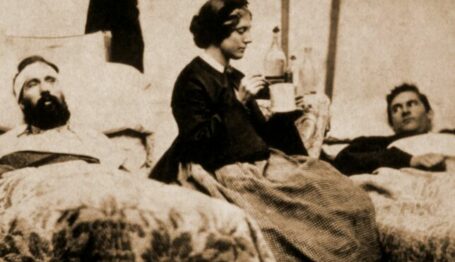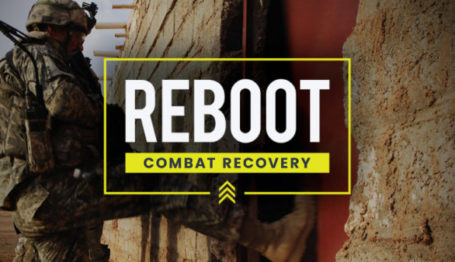Doing Good
Prisoner Reentry and the Power of Private Charity


On February 20, President Donald Trump spoke at the graduation ceremony for participants in the Hope for Prisoners program, a Las Vegas nonprofit that helps reintegrate formerly incarcerated people back into society. The president’s remarks shine the spotlight on a local charity that is leading the way on one of America’s most intractable societal problems—a problem that millions of dollars in government funding has struggled to alleviate.
“Stubbornly High” Recidivism
When a prisoner is released, as nearly all of them will be, the goal is to give him or her the best possible chance at a meaningful and productive life after prison. Perhaps the clearest way to measure this is the recidivism rate, or the percentage of released prisoners who are rearrested for new crimes over a given period of time.
Statistics on recidivism are rather disheartening. A study of prisoners released in 2005 found that 83 percent were rearrested within nine years, with 44 percent reoffending within the first year. Recent California data found a “stubbornly high” recidivism rate of about 50 percent within three years of release.
California represents a prime case study, since it has one of the largest and most expensive state prison system in the country. From FY2014 through FY2019, the state increased its annual budget for in-prison rehabilitation programs by nearly 30 percent to about $300 million. A comprehensive audit calculated a cost of about $8,500 for each inmate that completes at least one of the programs. Most of the recent funding increases have gone toward cognitive behavioral therapy (CBT) programs run by state-contracted staff. These are designed to address critical predictors of recidivism, such as substance abuse, anger management, strained family relations, and criminological thinking patterns.
Despite this investment, the audit found that inmates who completed the CBT programs recidivated at about the same rate as those who did not. California’s deputy director of rehabilitation programs suggested this may be because in-prison programs are insufficient on their own. Rather, positive impacts on recidivism may depend more on “post-release treatment in the community.”
The Success of Hope for Prisoners
That is where organizations such as Hope for Prisoners come in. A 501(c)(3) nonprofit located in neighboring Nevada, Hope for Prisoners has helped more than 3,000 former inmates over its 10 years in operation. Tax filings indicate that for most of this time it was operating on a budget of less than $300,000, though by 2018 its revenue had ballooned to $1.2 million. Hope for Prisoners receives support from government grants, which accounted for about a third of 2018 revenue, as well as from a variety of private foundations and charities such as the conservative-leaning Bradley Foundation. A number of faith-based organizations and congregations are also important partners, as are state and local law enforcement agencies.
The Hope for Prisoners reentry program appears to be dramatically effective. A detailed 2016 study found that only 6 percent of ex-prisoners who completed the program recidivated during the 18-month study period, and 64 percent found stable employment, half of those within about a month of completing the program. These are fantastic results for those who are otherwise heavily predisposed toward far more adverse outcomes during the critical first year after release.
Explanations for this success center on the unique mentorship structure used at Hope for Prisoners. In addition to intensive workshops, job referrals, and other programs offered to ex-offenders, each is matched with a trained volunteer mentor—some are former program participants themselves—whose role is to provide personal support, guidance, and encouragement. Particular emphasis is placed on honing job skills and finding good employment. The 2016 study concluded that the mentorship program “appears to be a key component of the reentry initiative” and singled it out for potential replication elsewhere.
Of course, Hope for Prisoners could be unique in ways that would make nationwide replication difficult. The program, which is voluntary and not court-ordered, almost certainly self-selects to those who are already motivated to make a positive change in their lives, leading them to be more receptive to the support they receive. It also benefits from uncommonly close ties to local law enforcement and from volunteers and staff who appear especially adept at their work. Much credit has been paid to founder Jon Ponder personally, an X-factor that is difficult to account for.
Still, effectiveness should always be emulated, even imperfectly. Although there is no silver bullet for prisoner rehabilitation, both ex-offenders and society writ large would benefit from even modest outcome improvements.
A Classic Conservative Solution
Although Hope for Prisoners is a nonpartisan charitable organization, in many ways its program reflects a classic conservative solution to a difficult problem. Values such as individual liberty, personal responsibility, limited government, democratic rule, and private charity all derive from a presupposition that most people are inherently good and capable of successfully running their own lives. To a conservative, it is axiomatic that the Hope for Prisoners program—which emphasizes personal talents and ambitions within an optimistic and supportive environment—would work so well. Likewise, not a single conservative would be surprised that a small, local charity with strong faith-based elements would prove more effective at addressing a societal issue than millions of dollars in government appropriations.
That is the salient point to remember in the increasingly bipartisan realm of criminal justice reform. As Hope for Prisoners looks to expand into offering in-prison programs for inmates up to 18 months before release—something Ponder says will cost taxpayers nothing—its track record gives every reason to be optimistic for success. Perhaps over time, Hope for Prisoners and organizations like it can increasingly do what private charity does best: work meaningful changes in people’s lives in ways government programs never can.



